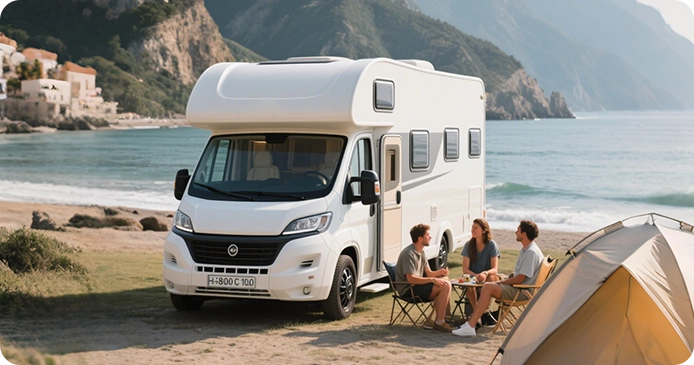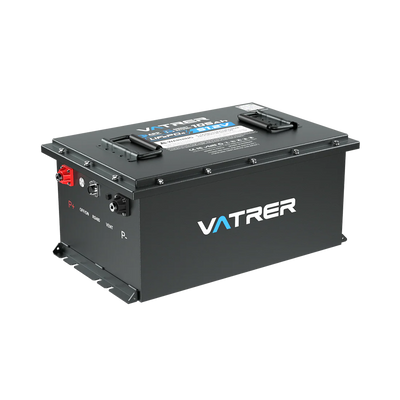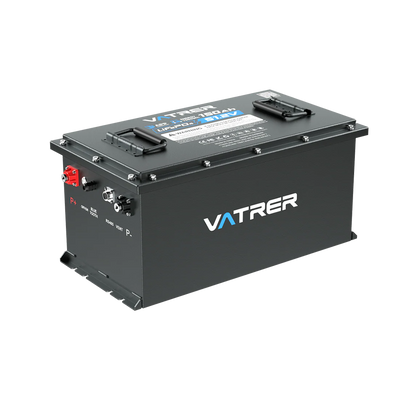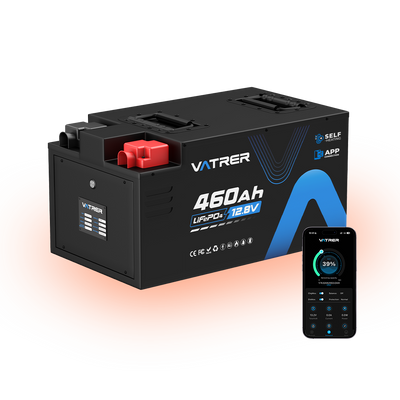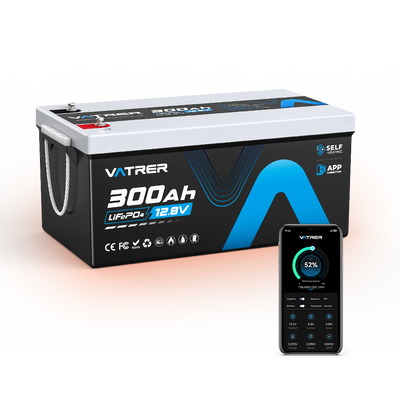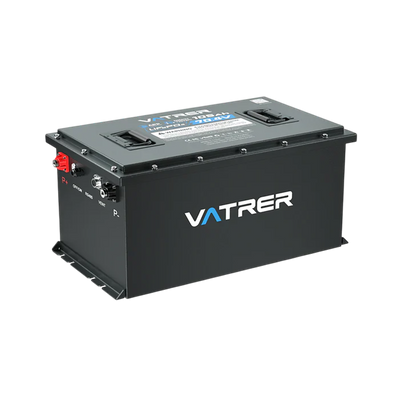
Should You Leave an Electric Golf Cart Plugged In When Not in Use?
For golf cart owners using modern smart chargers, it's generally safe to leave your cart plugged in overnight, as these chargers switch to maintenance mode at full charge to prevent overcharging. However, prolonged periods of continuous charging, especially for lead-acid batteries, may cause degradation if not managed properly. Lithium golf cart batteries, such as those from Vatrer, have lower self-discharge rates and built-in BMS, making them more suitable for extended plugging. For long-term storage, fully charge the battery, disconnect it, and check periodically to maintain optimal battery life.
Electric golf carts have become a popular choice for personal and recreational transportation, prized for their eco-friendliness and ease of use. However, one common question among electric golf cart owners is whether they should leave their carts plugged in when not in use. This blog post explores the pros and cons of keeping your electric golf cart plugged in, providing insights into battery care, potential risks, and best practices for extending the lifespan of your golf cart’s battery.

Understanding Electric Golf Cart Battery Types
The different battery type in your electric golf cart significantly impacts charging and maintenance decisions.
Most carts use either lead-acid or lithium golf cart batteries, each with unique characteristics:
- Lead-Acid Batteries: Common in brands of golf carts like Club Car and EZGO, these batteries are cost-effective but require regular maintenance, such as checking water levels and avoiding deep discharges. They typically support 300-500 charge cycles, with a self-discharge rate of about 20% per month, which affects their ability to recharge during periods of inactivity.
- Lithium-Ion Batteries: Lithium-ion batteries are becoming increasingly popular in models such as Yamaha and Club Car, with each battery offering a longer lifespan of 2,000-4,000 cycles and lower maintenance costs. Their monthly self-discharge rate is only 1-3%. These batteries feature a lightweight design, significantly improving the efficiency and range of golf carts. The built-in Battery Management System (BMS) ensures safety and efficiency, making them the ideal battery choice for golf cart owners seeking reliable performance.
Understanding your golf cart battery type is essential for deciding whether leaving your golf cart plugged in is appropriate and how to maximize battery life.
| Battery Type | Self-Discharge Rate | Charge Cycles | Impact of Deep Discharge |
|---|---|---|---|
| Lead-Acid | 20% per month | 300–500 | Sulfation, reduced lifespan |
| Lithium-Ion | 1–3% per month | 2,000–4,000 | Minimal impact, BMS protection |
Benefits of Keeping Your Golf Cart Plugged In
Leaving your golf cart plugged in when not in use offers several benefits for maintaining battery life and ensuring readiness:
- Battery Condition Maintenance: Modern electric golf carts come with smart chargersdesigned to prevent overcharging. These chargers switch to a maintenance or trickle charge mode once the battery reaches full charge, helping to keep the golf cart battery in good condition.
- Readiness: Keeping your golf cart plugged in ensures it's always ready with a full charge, which is convenient for frequent owners of Club Car, Yamaha, EZGO, or Icon carts.
- Preventing Battery Discharge: Lead-acid batteries can suffer from self-discharge during periods of inactivity, losing up to 20% of their charge monthly. Keeping the cart plugged in prevents this and maintains the battery's ability to hold a charge.
- Temperature Stability: In colder climates, keeping the cart plugged in can help maintain battery temperature, as lead-acid batteries may lose efficiency below 32°F (0°C). Ensure the charging area is well-ventilated to avoid heat buildup.
What Are The Potential Risks Of Keeping a Golf Cart Plugged In?
While keeping your golf cart plugged in has advantages, there are potential risks to consider, especially for prolonged periods:
- Risk of Overcharging: Although most modern smart chargers have safeguards, older models may not. Overcharging can cause excessive heat, damaging the golf cart battery and reducing its battery life.
- Electricity Consumption: Continuous charging during periods of inactivity can lead to unnecessary electricity consumption, which might not be cost-effective over time..
- Charger Malfunction: A malfunctioning charger could damage the battery or pose a fire hazard. Use a compatible golf cart battery charger with your Club Car, Yamaha, EZGO, or Icon golf cart.
- Battery Sulfation: For lead-acid batteries, prolonged periods of continuous charging without cycling can lead to sulfation, where sulfate crystals form on battery plates, reducing battery life. Regular discharge-charge cycles can mitigate this risk.
So, if you are still using lead-acid batteries or looking to upgrade your golf cart to a high-performance battery, you can explore Vatrer 36V, 48V or 72V lithium batteries.
Best Practices for Golf Cart Battery Maintenance
To ensure the longevity and performance of your golf cart battery, follow these best practices tailored to your battery type:
- Use a Smart Charger: Invest in a high-quality smart charger that switches to maintenance mode at full charge to prevent overcharging. This is essential for both lead-acid and lithium golf cart batteries.
- Regular Inspections: Inspect the battery and charger for signs of damage or wear. Ensure lead-acid battery terminals are clean and free of corrosion. For lithium golf cart batteries, check the BMS status via apps or displays, as offered by brands like Vatrer Battery.
- Proper Storage: If long-term storage is required, charge the lead-acid battery to 100%, or the lithium golf cart battery to 50%, then disconnect. Store in a cool, dry environment at 50°F-77°F (10°C-25°C) and inspect regularly to prevent deep discharge.
- Temperature Considerations: Extreme temperatures can affect battery life. Lead-acid batteries operate best between -4°F-122°F (-20°C-50°C), while lithium golf cart batteries handle -4°F-140°F (-20°C-60°C) for discharge, offering greater flexibility.
- Cycle Management: For lead-acid batteries, perform full discharge-charge cycles occasionally to prevent capacity fade. For lithium golf cart batteries, avoid frequent deep discharges, as their BMS optimizes performance with partial cycles.
| Storage Recommendation | Lead-Acid | Lithium-Ion |
|---|---|---|
| Charge Level | 100% | 50% |
| Check Frequency | Monthly | Every 3 months |
| Ideal Temperature | 50° F–77° F (10° C–25° C) | 14° F–122° F (-10° C–50° C) |
Why Consider Lithium Golf Cart Batteries?
Lithium golf cart batteries, such as those from Vatrer, offer significant advantages for golf cart owners seeking low-maintenance, durable solutions.
With a lifespan of over 4,000 cycles compared to 300-500 for lead-acid, lithium batteries provide long-term reliability.
Their low self-discharge rate of 1-3% per month reduces the need for frequent charging during periods of inactivity, and features like Bluetooth monitoring, low-temperature cutoff, and IP65 waterproof ratings ensure safe operation in diverse environments.
Compatibility with fast-charging systems further enhances their appeal for frequent owners of Club Car, Yamaha, EZGO, or Icon carts. While the upfront cost is higher, the reduced maintenance and longer battery life make them cost-effective.
Conclusion
Whether or not to leave your electric golf cart plugged in when not in use depends on several factors, including the type of battery, the charger's capabilities, and your usage habits.
For most modern golf carts with advanced chargers, leaving your golf cart plugged in can maintain battery life and ensure readiness.
However, for long-term storage or with older chargers, unplugging after a full charge and checking periodically is recommended to avoid risks. By following these maintenance practices, you can ensure your Club Car, Yamaha, EZGO, or Icon golf cart's battery performs reliably for years.
For cart owners considering upgrading their batteries, Vatrer offers high-quality lithium golf cart batteries designed for both efficiency and durability.
Vatrer batteries come with a comprehensive warranty, Bluetooth monitoring, IP65 waterproof rating, and over 4,000 charge cycles, making them the ideal choice for golf carts and home solar systems.
Visit the Vatrer Power shop to explore our lithium iron phosphate batteries, with a new user discount available on your first purchase. Let Vatrer power your golf cart with strong performance!
Share







































































